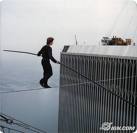Claire Tackles the Love/Work Balance Conundrum
The following excerpt from the 2020 documentary Two Brains, One Blog is a dramatic recreation of True Events.
Title Card: June 2009.
Sarah’s Dining Room table. Hunched over laptops, Sarah and Claire draft their soon-to-launch website’s About Us section during their Sunday afternoon work session.
Claire
Ok, we’ve got the thing about agents and the soaps/family thing...what about my trick about getting through to Unemployment?
Sarah
Yeah, that’s good...what else do actors really want to know about? What about something relationship-oriented? Like how can you even be in a relationship when you’re never home, etc.? I know that was an issue with [Redacted].
Claire
Oh, yeah. With [Redacted] that was always a problem.
Sarah and Claire think back with sympathy, compassion, and a tad of pity on their younger, less wise selves. Claire’s face lights up when she sees an incoming text message from her Significant Other. Sarah exchanges a loving glance with her boyfriend as he walks through the room on his way to feed the dog.
Sarah
Something about making your mate feel good…
Claire
…when you’re home ten waking hours a week!
Sarah
Yes!
Fade out over the sound of happy, rapid typing.
Title Card: October 2009
Sarah and Claire, harried and caffeinated, sit on the upper deck of the Hollywood and Highland shopping center, during a break in, of all things, a conference on Business and Twitter (a then-popular "social networking" platform) to which they somehow finagled free tickets. Claire has just finished telling Sarah about her recent conversation with the owners of a well-established blog and reports that they are impressed with BOM’s early stats…
Claire
So, I’d say we’re doing well.
Sarah
Yeah, considering we started with zero dollars and zero time, I’d say we’re doing really well.
(Slight beat)
Claire
And now we have zero boyfriends.
Claire stares into the distance as she imagines an eternity without cute text messages. Sarah imagines jumping off the deck.
Fade to black.
Oh, June. The good old days. Back when we thought we knew something about love and work. And maybe we did. But then we didn’t. And we had posts to write and html to learn, so who had time to think about that stuff, anyway… Back when Minerva was going to fit seamlessly into our existing lives. And while she is indeed amazing and we love her, sometimes I wish she could stay with her grandparents for a week.
Now, before you chastise me for Blaming the Child and call Blog Protective Services, I fully admit that Minerva was never once listed in the Official Causes Inventory of my last romantic rupture. But given the timing (Sept. 15 – last unfortunate things said; Sept. 16 – site launch!) I have to wonder, would I have been more patient, a more creative problem solver had it not been for our mad dash towards the Finish Line (which then only became another Starting Line)? Or was the timing fortuitous? Did the project stress bring to the fore incompatibilities that would otherwise have taken much longer to surface, dragging out the inevitable, and only pushing a more promising match that much farther into the future, as fun and cute and intelligent as that detour was…
Oookay, I’m back. Whether it’s the pressure of launch dates, opening nights, network tests, or location shoots, a life in acting is not short on challenges to maintaining a committed romance. And yet the low lows are much easier to weather when attached to an empathic partner, and the glorious high highs are a lot of fun, and a lot more meaningful, when shared.
I plodded through the holidays as a singleton, which gave me plenty of time to visit exes’ Facebook pages (baby announcements! honeymoon status updates!). It also gave me time to swing by the Kenneth Cole outlet & pick up some great new date shoes. For, while Minerva is still a baby, she is finally sleeping through the night. Or we’ve just gotten used to not sleeping. Either way, I once again have the time and inclination to put on some lipstick and slip out for a few hours.
How can I re-enter the dating waters stronger and more flexible than before? Where is an actress and recent-ish Los Angelena to turn to further her romantic education? Why, the movies of course! My favorite hard-ass Romanian director once told me – “If you must watch videos to research, don’t study characters from copies of copies! Go to the source!” In the last few years I’ve seen several well-received documentaries about creative iconoclasts famous and obscure. Could I mine them for lessons on work/love balance?
My Romanian director’s directive sent me to the video store in an attempt to create the Commedia Delle’arte whore Columbina from the HBO doc Pimps Up, Hos Down. Perhaps in an equally questionable/somewhat misguided vein, I began my work/love exploration by re-watching Some Kind of Monster, the 2005 documentary about the making of thrash metal band Metallica’s 8th album…St. Anger.
The following contain SPOILERS (but, goodness, they’re docs about artists, not Da Vinci Code sequels).
Some Kind of Monster
Some Kind of Monster begins in 2001. The band’s bassist has abruptly resigned after the lead singer, James Hetfield, forced him to choose between Metallica and his side project. The remaining members, Hetfield, co-founder and drummer Lars Ulrich, and guitarist Kirk Hammett are about to enter the studio to make their 8th album. No strangers to dysfunction (the band has long been nicknamed “Alcoholica”), their evil ways been enabled and emboldened by their almost otherworldly record sales. But now things are at a breaking point. At the suggestion of the band’s management, it has hired Phil Towle, a “performance coach” who specializes in helping “big dollar, big paycheck guys” manage their egos and get the job done.
Therapy, middle age, talent, substance abuse! These are my kind of guys!
The movie touches loads of fascinating aspects of success, creativity and the music industry, but it’s the “marriage” between the band’s two founding alpha males that is the center of Some Kind of Monster. With over 20 years of competition, contempt, and power struggles between them (and you haven’t seen comedy until you’ve seen a middle-aged heavy metal band draft its Mission Statement in therapy) there’s lots of fallout when the walls start coming down.
Before long, James disappears to rehab, cutting off all communication with Lars and leaving the band’s future in doubt. James says he has to focus on his wife and kids (apparently, going to Siberia to shoot bears on your son’s 1st birthday will get you in a lot of trouble, even if you drink shots to him). Lars, uncertain and pained, fills his days battling Napster, works with Towle to repair other relationships, and finds solace in his stellar art collection.
When James returns, the band’s communication and working styles are much more democratic, but plenty of speed bumps keep the tension thick. The Ulrich/Hetfield marriage ultimately survives (and sells shitloads of records), but one of the others isn’t so fortunate.
Love Lessons:
- Therapy can be good. Would Metallica have survived without the interventions of Mr. Towle? I doubt it. In this case, Towle seemed to enable Lars and James to step back from reacting to their troubled relationship, and to appreciate its productivity and see where other parts of their pasts were influencing their feelings about one another. Also, therapy gave them a “common enemy,” and what relationship couldn’t use one of those? The few instances of levity and bonding between Lars and James in Some Kind of Monster occur when they’re complaining about Towle or the record industry.
- As James reflects on his relationship with Lars he says, “It’s been competitive from Day 1. But that’s also what’s made Metallica move forward.” Perhaps the biggest source of friction in our relationship is also the cornerstone of its success. Can recognizing this soften the blame we level on our partners and ourselves?
- If your husband abruptly sells the art collection, it might be time to dust off the prenup.
Anvil! The Story of Anvil
Sasha Gervasi’s 2008 documentary Anvil! The Story of Anvil follows a year + in the life of the Canadian heavy metal band, yes, you guessed it, Anvil. Gervasi met the band in 1982 and became its roadie as it toured during its first and only flush of fame, which culminated in 1984’s Summer of Rock Tour (in which they appeared with Whitesnake, Scorpions and Bon Jovi). But as their star has only continued to fall in the ensuing decades, Stephen ‘Lips’ Kudlow and Robb Reiner, the two founders, have kept at it, playing local pubs while holding down menial jobs.
The film attempts to answer What Went Wrong – the band has real talent and the same window of opportunity that many of the bands that they started out with opened into decades of fame. Watching it recently for the second time, however, I found myself thinking more and more about, well, What Went Right. Though they’ve fallen off the industry radar, Lips and Reiner have rich and loving relationships with their spouses, children, and extended families and continue to find unequaled pleasure in their music and in each other.
The year gets off to a sad start when they embark on a promising string of European tour dates, only to come home 5 weeks later without having made a dime and having used up their vacation time. The pendulum swings the other way, though, when they’re able to record with the producer of their best-received album back in the day, which gives their work the best presentation it’s had in years. But while the men of Metallica were more at ease in the studio than anywhere else, the gents of Anvil stand on shaky ground as they step up to their dream. The studio is not their home; their homes are their home.
Despite the big-time producer and their best efforts (the scenes of Lips making drop-offs of their unsolicited demo for 2 weeks in LA had me cringing with emapthy) album #13 (This is Thirteen) struggles to find an audience.
Lips and Robb are disappointed, surely, but Anvil is – for better or worse – a way of life, and they continue to show up for their concerts (and documentaries) as sure as breathing. In his NY Times review, A.O. Scott said of the movie, “…it might make you think in new ways about a cruel cultural logic that increasingly obliterates the middle ground between success and failure… Anvil! The Story of Anvil makes both a case and a place for their band.”
Love Lessons:
- Our relationships can be supportive and motivating, but can they also inhibit our growth, giving us company to live in fantasies of what-could-have-been? In a particularly heart-tugging interview Robb’s wife says she “bought into it too.” She admits that she has trouble letting go of the fantasy of rock-star wifedom, acknowledging she hasn’t updated her (big) hairstyle since they met.
- On the same note, did Lips’ and Robb’s loyalty to Anvil & each other dwarf their chances for individual rock stardom? Perhaps the biggest clues to Anvil’s strange and winding road lie in a special features interview with, who else, Lars from Metallica! In it, he says that when Metallica appeared on the scene (a couple of years after Anvil) they all talked about Robb Reiner’s drumming as if it was in “another league.” And Lips’ stage performances were legendary. In this interview, Gervasi and Ulrich discuss the rumors (which weren’t at all mentioned in the film proper) that, throughout the years, Lips and Robb had rejected offers to replace members of other bands (Ozzie’s in Robb’s case and Motorhead in Lips’). They turned them down, he understands, because they were completely devoted to Anvil and making it as a band.
- This shit is complicated.
Man on Wire
Man on Wire is James Marsh’s 2008 documentary about Philippe Petit’s illegal 1974 tight rope walk between the towers of the World Trade Center. Ever since its release, this Oscar-Winner has been a touchstone for creative professionals everywhere. Friends told me they had been “forever transformed” watching the story of Petit stay true to his creative vision over years and countless obstacles. Minerva’s aunt career coach Dallas Travers even wrote the introduction to her book about it!
I see what all the fuss is about: Petit’s willingness to flout society’s definition of the possible; his meticulous planning (weather! construction! trespassing!); his ability to assemble a stellar team and maintain its loyalty through delays, fallings out, and exhaustion.
And yet, there is one image from the film that haunts me, and it is not the historic footage of the pre-dawn wire walk.
One member of this winning team was Annie Allix, Philippe’s girlfriend from Paris, who steadfastly stood by him, helped him prepare, and supported his vision. On the day he achieved his ‘coup’ and instantly become a New York folk hero, he took as one of his rewards the physical affections of a nubile stranger who thrust herself in his path. When now asked about the post-walk festivities, Philippe has a twinkle in his eye as he tosses off the indiscretion as his due. When the subject comes up in a separate interview with Annie, I can still see puzzlement, pain, and then resignation flit across her face as she recounts the day’s events almost thirty years later.
Love Lesson:
- Maybe I should stop watching these documentaries.
Okay – so maybe heavy metal bands and tight rope walkers are not the ideal place for me to look for my romantic role models. Fortunately, last winter I happened upon two documentaries that follow creative women diving head-long into the work/love beast.
Who Does She Think She Is?
The film’s website intro reads “Everyone expects women to choose – motherhood, career, self-fulfillment, creative expression, money…But what if you didn’t?” Who Does She Think She Is? follows five women artists with families who follow their creative impulses regardless of the consequences to their personal lives, which, in some cases, are quite severe. Some of the subjects have been practicing artists since childhood while others finally heeded the call well into adulthood, when their family lives were already set up around a different set of priorities.
When this rolled through LA last year, I went more out of Good Feminist Duty than anything else. The confrontational title and the trailer with academics discussing the “ghettoization” of women artists had me fearing a whinefest. But sitting alone in the Laemmle Music Hall one afternoon with my contraband Snapple, I discovered a work full of courage and surprises.
At least one subject seems to be an unreliable narrator of her own experience. By juxtaposing the different women’s stories, I wondered if the filmmakers, Pamela Tanner Boll and Nancy Kennedy, might be asking us to determine who, well, is walking her talk about the importance of her work and its effects on her family. Might some be using their status as women as a way of rationalizing a lack of success? Are they using their commitment to their art as an excuse for not learning the skills to maintain satisfying relationships? In the interests of the husbands and kids who did not agree to have their lives cracked open, some of the most difficult questions (like the reasons for the dissolution of a marriage) linger in silence. The filmmakers have the discipline to leave the space for us to wonder about them and ourselves.
Ultimately, it’s not the New Mexican earth goddess et al or the academic New England family, but the Mormon brood in Ohio who have best integrated the matriarch’s work into family life. Janis Mars Wunderlich is a well-recognized sculptor and mother of five. Her husband Philip encouraged her to explore art when they met in college and immediately recognized its importance to her personal development. And now, consequently, he sees her art-making as imperative for the health of their family.
Love Lessons:
- If you have 20 minutes in the studio, then take 20 minutes in the studio. Janis also impressed me in that she seemed to have given up worries about not having the appropriate time for her work or the ‘perfect’ conditions. She does what she can when she can. The conflict comes out in the work (you’ll just have to take a look!), which seems like a pretty good place for it.
- The biggest tensions seemed to arise when Significant Others were unaware of how important the work was to their partner – whether they were resistant to hearing or the subject was resistant to communicating is not mine to say. But I took away the importance of making the time and effort to share one’s feelings about one’s work with partners and kids. Can this help us come to a mutual understanding of how doing our work is also paramount to the health of our relationships?
Flying: Confessions of a Free Woman
I missed this one during its 2007 run in New York at The Film Forum. The Erica Jong-rip off title seemed vague and silly (What is she confessing? Of course she’s free, she’s flying somewhere). Then when I learned that it was about a woman with a kick-ass art career who can’t choose between two boyfriends I thought director/subject Jennifer Fox was the last person on earth I needed to give $12 to.
I was wrong. When I finally dove in to the six hour-long episodes, I took an incredible ride. Fox fearlessly unpacks questions of sex, money, marriage, fertility and love. At 40, the award-winning documentarian finds herself in a romantic quagmire (caught between an affair with a married man and a burgeoning relationship, and, oh, there’s that last chance at a baby thing…) and wonders how she got there. Unlike Who Does She Think She Is?, Flying… doesn’t explicitly set out to explore the tension between Fox’s romantic and work lives, but as an artist who has unapologetically put her work at the center of her life for decades and is now facing a personal crisis, it doesn’t take long for before the forces start knocking into one another.
Early in the series, Fox says she wants “to step out from behind the screen” that her work has allowed her to hide behind. Mission accomplished. While this level of self-reflection may sound like a recipe for a narcissistic disaster, Fox is saved by her ability to detach from her own judgments about herself and other women’s choices and stay open to new perspectives. Over time, we see her values change, and she makes new associations between the events that formed her ideas of womanhood.
Fox makes hard choices about men and children over the course of the series, and life sometimes makes hard choices for her. While she may not have prioritized starting her own family, her work has enabled her to assemble an extraordinary family of women friends. In the series she travels throughout the world filming their perspectives on their own lives and their opinions about her decisions. Fox calls this technique “passing the camera” and goes into detail on the process in the film’s web site. Flying’s website also features an active blog in which Fox and many of the other women who appear in the film continue to share their stories and debate their choices (and invite readers to as well).
The blog is a wonderful epilogue to this work, which, along with the other films, showed me that finding love/work balance is more a process of continually opening up to new conversations than of searching for answers.
Love Lesson:
- Real love takes real time.
If you’d like to learn more about a movie, click on the title to visit its website:
Flying: Confessions of a Free Woman
You can visit Janis Mars Wunderlich’s site here and Dallas Travers’ here.
Photo by:






























[…] The rest is here: Love, Work and Documentaries « Brains of Minerva […]
[…] love/work balance from various documentaries. Who Does She Think She Is? is featured prominently. Click here if you’d like to have a […]